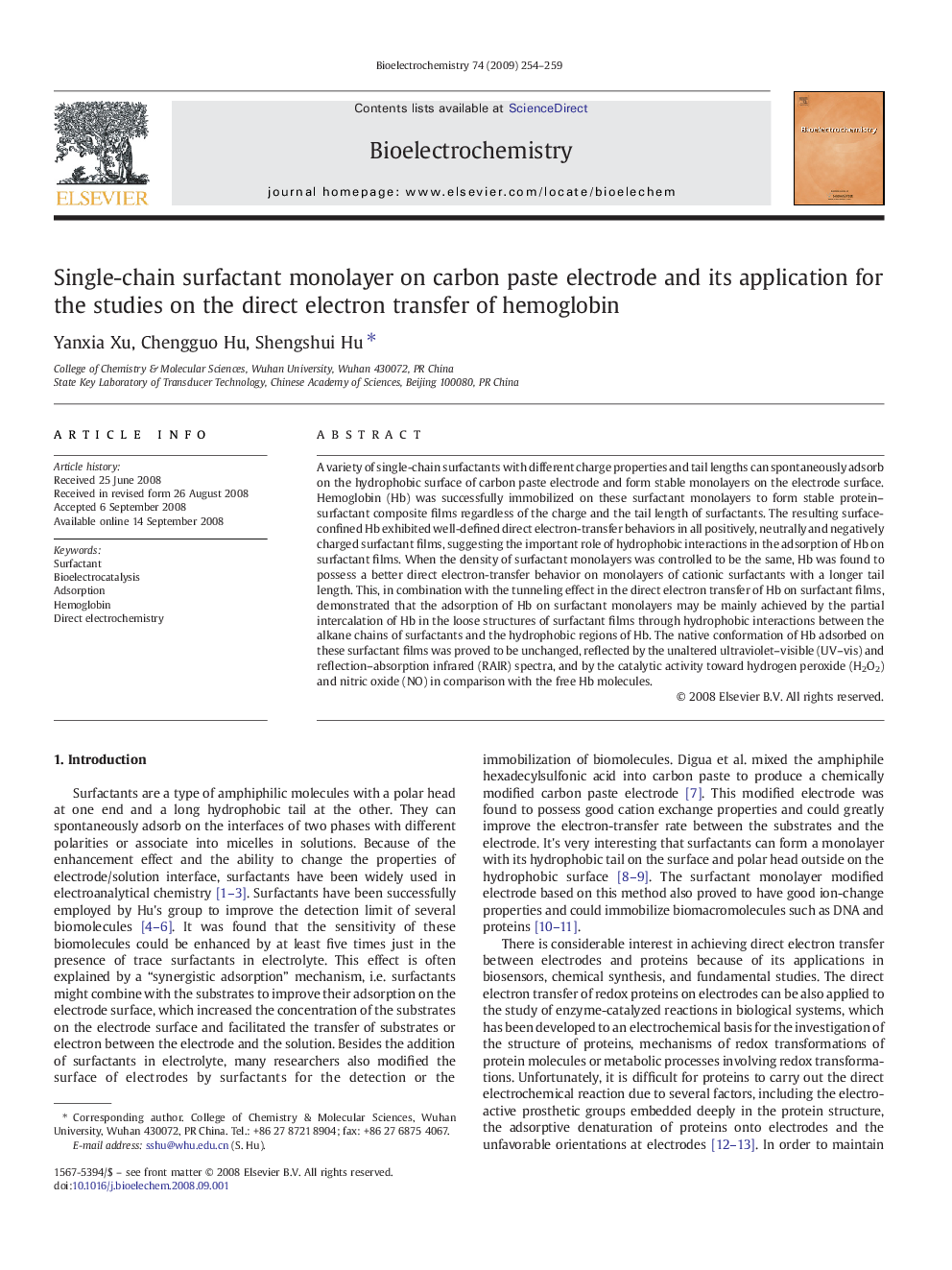| Article ID | Journal | Published Year | Pages | File Type |
|---|---|---|---|---|
| 1267459 | Bioelectrochemistry | 2009 | 6 Pages |
A variety of single-chain surfactants with different charge properties and tail lengths can spontaneously adsorb on the hydrophobic surface of carbon paste electrode and form stable monolayers on the electrode surface. Hemoglobin (Hb) was successfully immobilized on these surfactant monolayers to form stable protein–surfactant composite films regardless of the charge and the tail length of surfactants. The resulting surface-confined Hb exhibited well-defined direct electron-transfer behaviors in all positively, neutrally and negatively charged surfactant films, suggesting the important role of hydrophobic interactions in the adsorption of Hb on surfactant films. When the density of surfactant monolayers was controlled to be the same, Hb was found to possess a better direct electron-transfer behavior on monolayers of cationic surfactants with a longer tail length. This, in combination with the tunneling effect in the direct electron transfer of Hb on surfactant films, demonstrated that the adsorption of Hb on surfactant monolayers may be mainly achieved by the partial intercalation of Hb in the loose structures of surfactant films through hydrophobic interactions between the alkane chains of surfactants and the hydrophobic regions of Hb. The native conformation of Hb adsorbed on these surfactant films was proved to be unchanged, reflected by the unaltered ultraviolet–visible (UV–vis) and reflection–absorption infrared (RAIR) spectra, and by the catalytic activity toward hydrogen peroxide (H2O2) and nitric oxide (NO) in comparison with the free Hb molecules.
